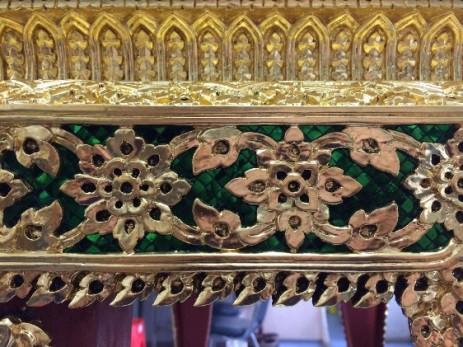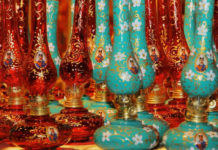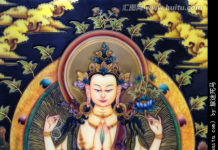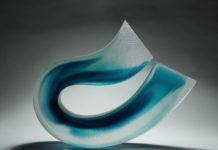Gilding and glass inlay is an ancient royal craft with a long history. An Ayutthaya chronicle recorded King Sanphet IX’s order to carry out gilding and glass inlay at the pavilion storing Buddha’s footprint.
Gilding and glass inlay is considered part of lacquer work, mixing the use of gold leaf and coloured glass to create beautiful designs. The work begins with sanding and cleaning the surface; applying lacquer three to four times until achieving a smooth, shiny surface; applying gold leaf, followed by coloured glass. Three kinds of glass have been used since ancient times, namely kriab, kaeo and kaeo ava, the latter finds popular use today.
Gilding and glass inlay can be divided into three categories. The first is gilding on the patterns and inlaying glass on the surface. The second is carving patterns and cutting glass into pieces to fit the patterns and gilding all over the space. The last one is gilding on the patterns and cutting the glass into different shapes to inlay within the patterns. Nowadays gilding and glass inlay technique is still used for decoration of religious-related furnitures as well as buildings in temples, while it is also found to be used for commercial furniture with traditional style.
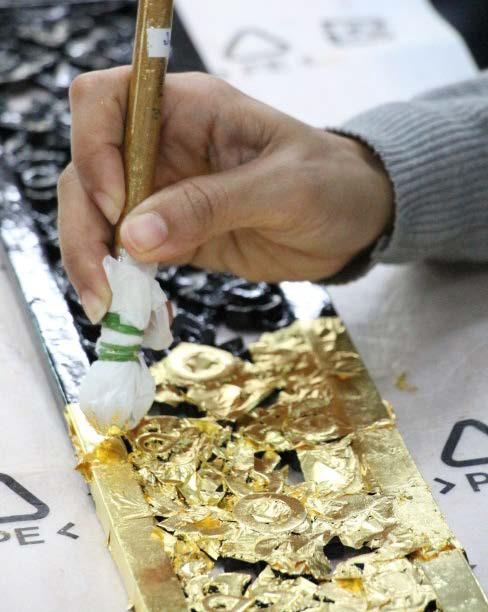
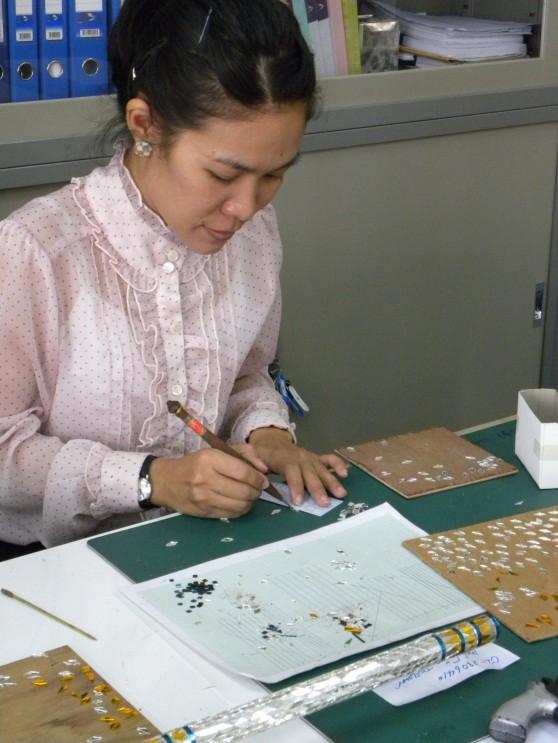
Glass mosaic decoration by craftsmen of the Office of Traditional Arts, Ministry of Culture


